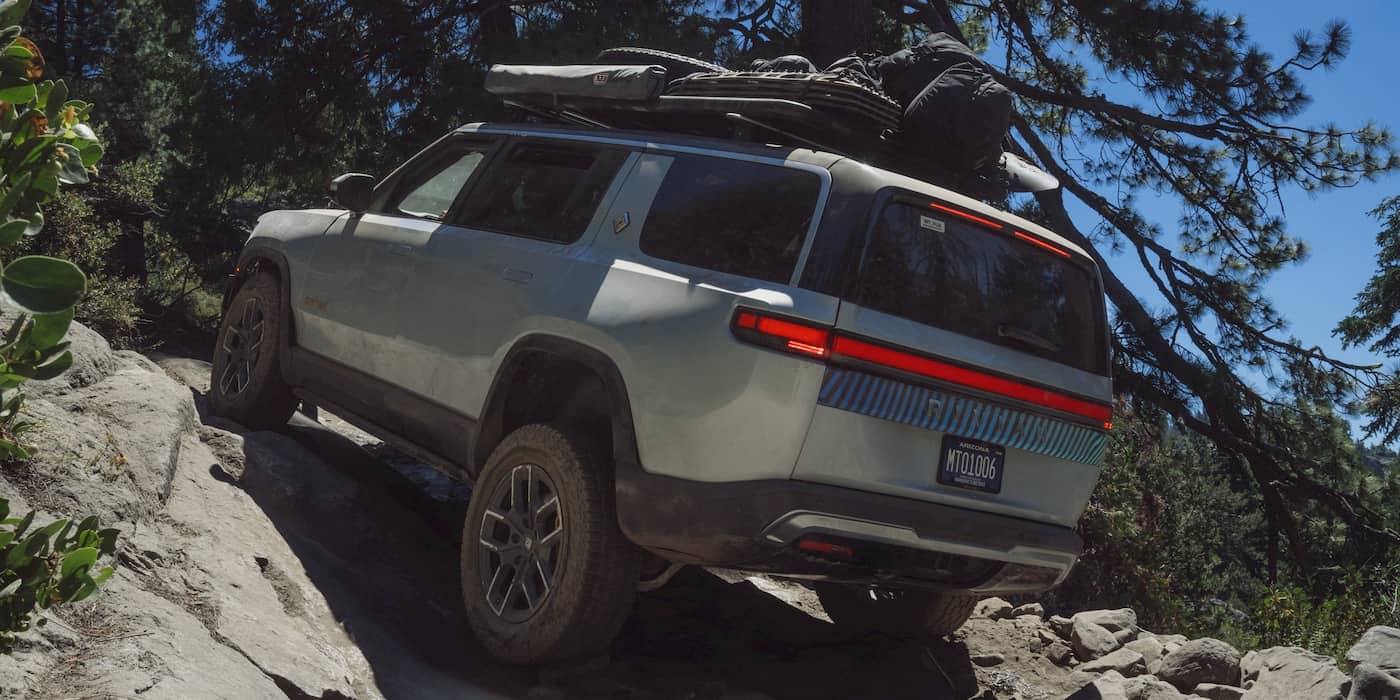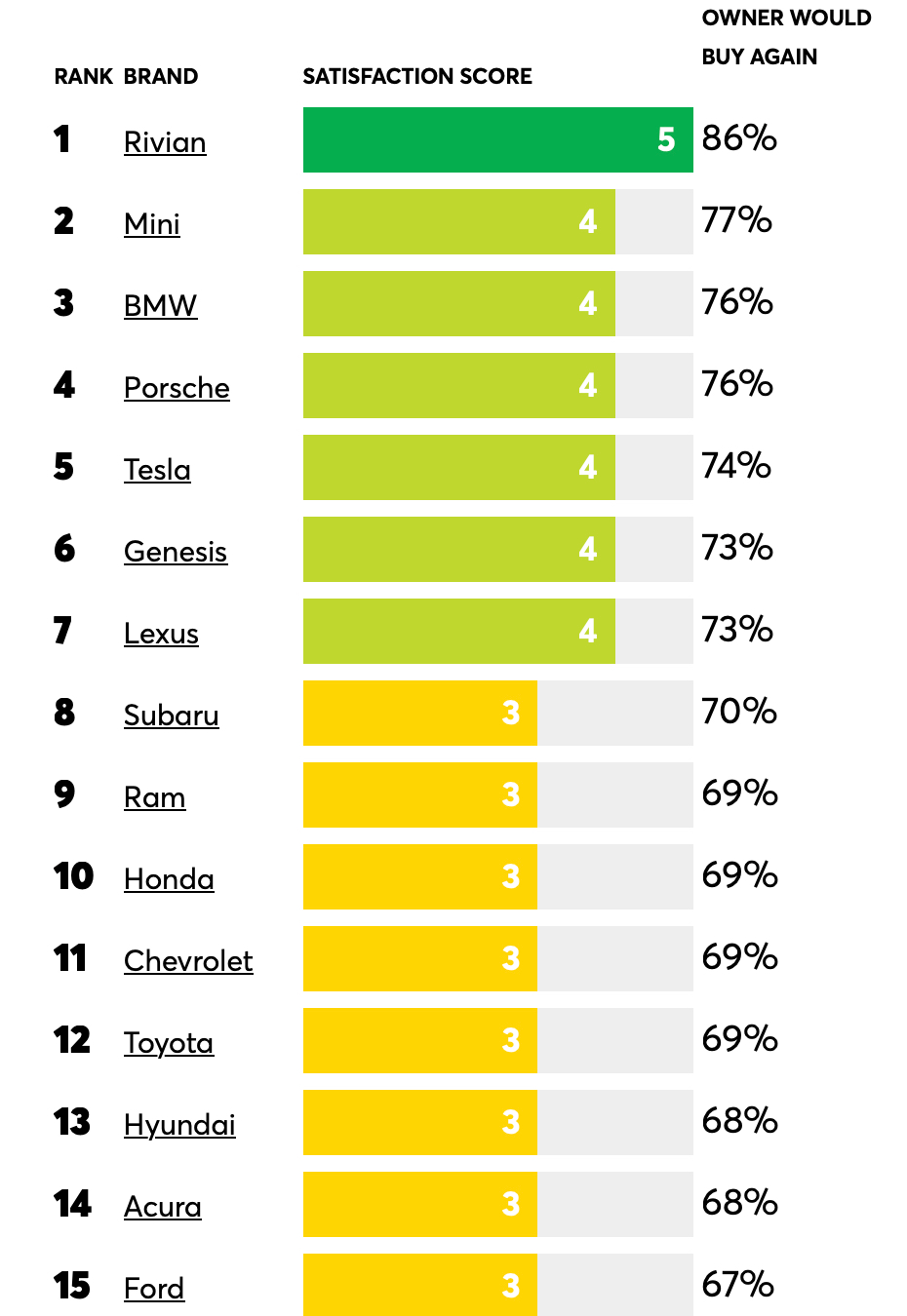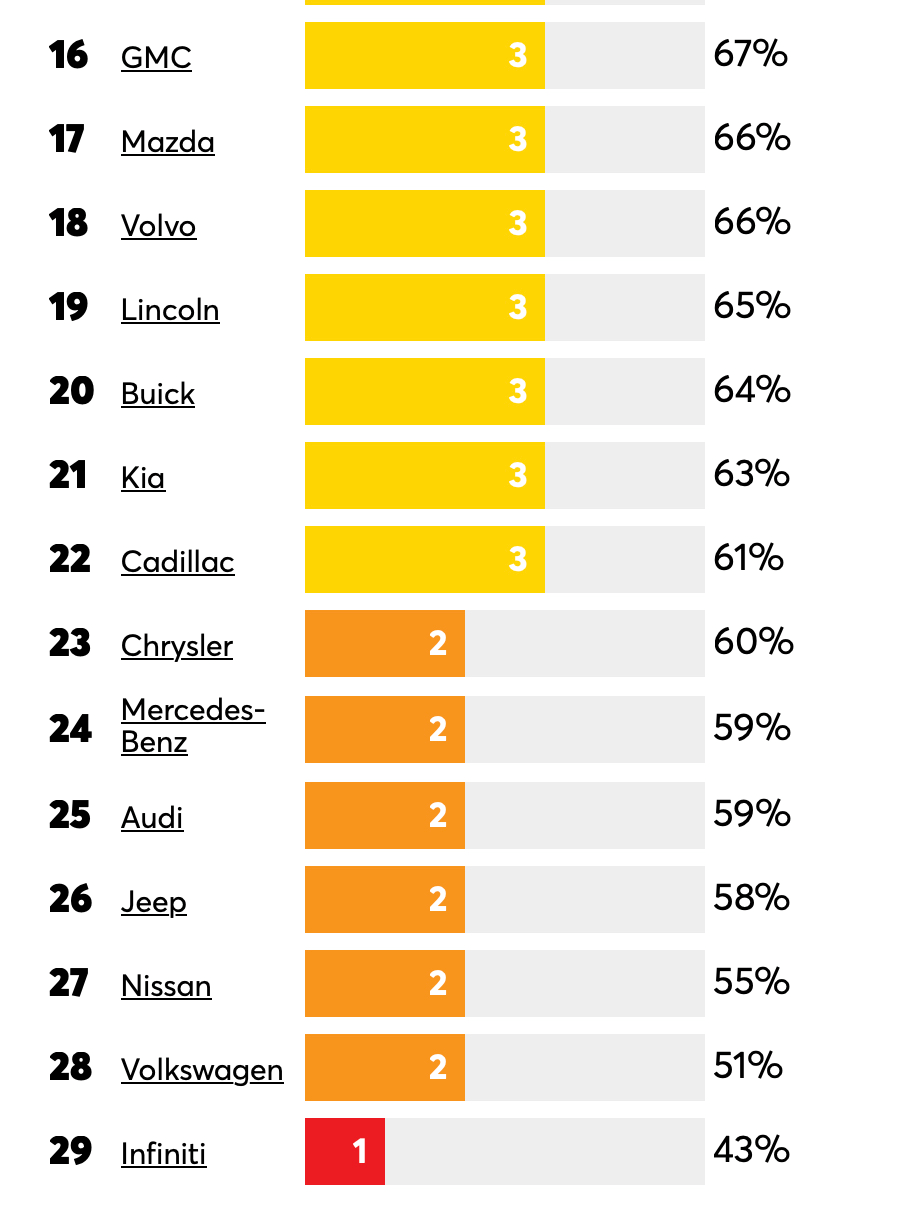
Consumer Reports is out with its annual owner satisfaction survey, showing Rivian to be far and away the most-loved car brand according to owners. The rating comes soon after a couple of Consumer Reports’ reviewers strangely listed the R1S as one of their “least favorite cars we tested in 2023.”
Consumer Reports does an annual survey of its readers, with 330,000 responses from owners of all sorts of vehicles in the 2021-2024 model years. In the past, electric vehicles have ranked well in the survey, and this year is no different, with Rivian topping the list by a commanding margin.
In this year’s rankings, Rivian was the only brand, out of 29, to reach a satisfaction score of 5 out of 5. Six other brands got a 4 out of 5 score, with the biggest chunk of brands receiving a score of 3.
Beyond the satisfaction score, Consumer Reports also asked owners if they would buy from that brand again. In this survey Rivian again ranked the highest, with an 86% score, 9% higher than Mini’s 77% second-place score. And that 9% gap is a big one – it’s the biggest gap between places on the list, with other brands largely being clustered close together, only a percent or two away from each other.


This isn’t the highest “would buy again” score that Consumer Reports’ has ever had, as Tesla has ranked over 90% in the past. Tesla’s score is down significantly from its peaks, which could be a reflection of several factors – slipping service quality, annoyance with Tesla CEO Elon Musk’s nonsense, or just simply a move from catering to a smaller and more evangelistic early customer base to becoming a mass market company.
That last factor probably does help Rivian in these rankings, as the company is still rather small, and thus will tend to have a customer base that identifies more fully with the brand and its early mission statements. It also helps that Rivian produces only two vehicles, so its brand score is more a representation of how good those two vehicles are, rather than an entire product line (which, for some other larger brands, might include a few good cars and a few stinkers).
When breaking down owner satisfaction into different categories, Rivian excels in most of these individual categories as well. Rivian shows up as one of the most satisfying vehicles in comfort (alongside several luxury brands), driving (alongside Tesla, sportscar brands, and a couple luxury brands), cabin storage (though well behind Ram), and ownership cost (fuel, maintenance, and so on – where electric cars and Asian automakers did well). The only category that Rivian didn’t rank near the top of is usability of the interface, perhaps due to the car’s heavy use of a digital touchscreen-based interface instead of analog controls.
It’s also true that Rivian’s vehicles have been exceptionally well-reviewed by, well, basically everyone. We loved the R1T and the R1S (Seth owns one, and loves it), and so has basically every other outlet. In fact, the earliest reviews were so good that when I talked to a fellow journalist about how positive they were, they expressed suspicion: “usually there’s at least someone who says something bad about a car, but I’ve heard nothing negative about the R1T.”
Well, except for Consumer Reports. Two of CR’s reviewers recently noted on its Talking Cars podcast that the R1S was one of their “worst cars of 2023”. They stated that the car was too expensive, and was “undriveable” and “nauseating.”
The problem, to the reviewers in question, was that the throttle is too twitchy both on and off throttle. Letting off throttle for regenerative braking felt “lurching” and “unsettling” to the reviewers. They stated that they found it “odd” that owner satisfaction is so high.
Update: Consumer Reports reached out to remind us that these were the personal opinions of the reviewers in question, not necessarily reflected in their overall road testing score for the vehicle (which is only available behind paywall).
So… why the disconnect?
So why would Consumer Reports’ reviewers have such a different take than Rivian’s owners, and than other EV reviewers as well? I think I’ve got an idea.
The issue here seems to be a matter of throttle response. Electric motors can respond more quickly than internal combustion engines can, so it’s possible to build an electric vehicle that responds much more quickly to throttle inputs. For inexperienced drivers or passengers, this can be jarring, especially in the beginning, as cars will feel much more twitchy for any driver with an unstable pedal foot.
If drivers are used to accelerating and coasting (which you shouldn’t do in a gas car anyway – the most efficient driving method is to maintain a steady level of throttle whenever possible), this can make EVs seem jerky. This style of driving is common in an ICE car, because outside of highly-tuned sportscars, ICE cars just don’t respond very quickly to throttle inputs. And the problem usually can be solved by more experience driving an EV, and recognizing that it’s important to have a steady throttle foot to reduce the jerkiness of the drive experience.
For exceptionally powerful EVs, this is even more the case, because smaller throttle inputs produce larger jumps in power. With the Rivian’s quad-motor setup, regenerative braking can also be very strong, and so letting off the accelerator quickly can produce a jarring braking motion.
Some electric vehicles moderate throttle inputs for this reason, either adding a delay or smoothing out inputs to make for more gradual acceleration and deceleration – both the Fisker Ocean and Chevy Blazer EV, which I’ve driven recently, do this. Frankly, I find the “delay” method to be the nauseating one – it means the car is making decisions, instead of me, and those decisions happen at a time that’s not predictable to me, leading to a jerkier ride. This was the worst spot, to me, in my reviews of both of those vehicles.
VW Group vehicles have a different method – they only allow for light regen off-throttle, and instead use blended brakes to engage higher regen when pressing the brake pedal, only activating friction brakes if you push the brake pedal deeper. But this means “one pedal driving,” which is so popular among EV drivers, is not really possible in these cars.
These solutions are different than the one Rivian has taken, which is to just give you strong regen all the time and let the driver have control over what the vehicle is doing.
The Rivian’s regen is adjustable, but less so than some other vehicles. Some vehicles like the Chevy Bolt or Mercedes eSprinter have easily-adjustable regen by using paddles on the back of the steering wheel (and the Bolt’s is probably the best regenerative braking system out there all told). On the Rivian, you need to change the setting on a screen menu and there’s no way to turn it all the way off. This has in fact been an area of criticism for Rivians, as some have called for more adjustability to the regen system (and they’re probably right).
Top comment by Eleftherios Pavlides
You write;
"This strong regen does tend to shock newer EV drivers, or people who don’t drive EVs full time."
Thanks for reminding me of the shock of the first hour I drove my Tesla Y. Two weeks later, I forgot about it all together.
Now that I am used to driving a clean electric engine car, I find it shocking to drive a dirty gasoline engine car in so many ways. I wonder how I tolerated the rattle of death sound that an accelerating gasoline combustion car makes. The calming effect of the near-soundless electric car is an invaluable mental health bonus of driving an electric car.
This strong regen does tend to shock newer EV drivers, or people who don’t drive EVs full time. But among the longtime EV owners I know, almost all of them prefer strong and responsive regenerative braking, and have learned to moderate their throttle inputs effectively to ensure proper command over the vehicle and also maintain a smooth ride. And I notice the same as a passenger in an EV – it’s usually a smoother ride when the driver is more EV-experienced than when they’re more used to gas cars.
So this could explain it – for a reviewer who doesn’t drive EVs full time, who has a lifetime experience driving relatively unresponsive gas cars before moving to one of the most torquey and responsive cars on the road today, the shocking difference in how quickly power is available could make it hard to adjust. Heck, I had this issue when I drove my Tesla Roadster to test out a Plaid Model S – despite being from the same brand, and the Roadster being incredibly responsive, the Model S still knocked me for a loop with ~4x as much horsepower as I was used to.
Meanwhile, for Rivian owners, who are used to their vehicles, they don’t see what the problem is. The vehicle responds as they expect it to respond, they’ve gotten used to it, and they love the instant availability of torque, the feeling that the vehicle is almost reading your mind as it’s electric motors respond more quickly than any big diesel truck you’ve experienced.
So, this is something to keep in mind for electric vehicle test drives in general – regen could be shocking to you to begin with, but if you take some time to get used to it, to get some practice moderating your throttle inputs in a way that you haven’t had to do before with most gas cars, maybe you too can reach a new level of satisfaction with your car – just like the Rivian owners in this survey have.
FTC: We use income earning auto affiliate links. More.


Comments